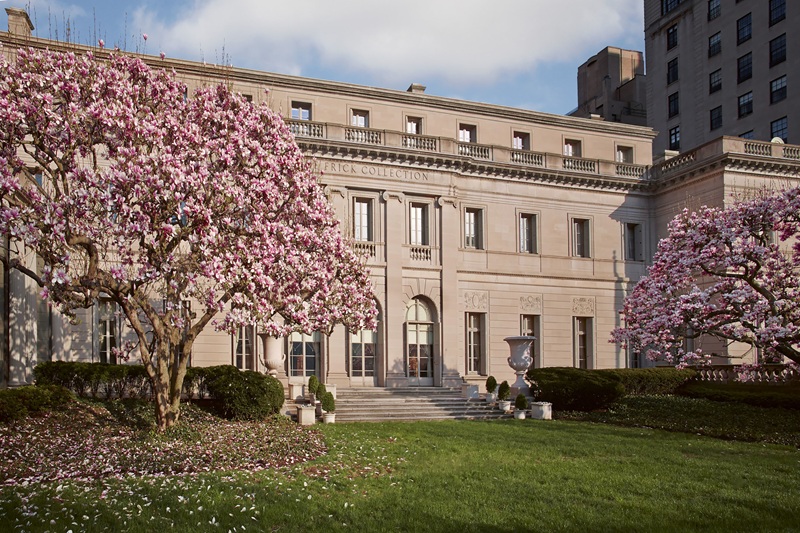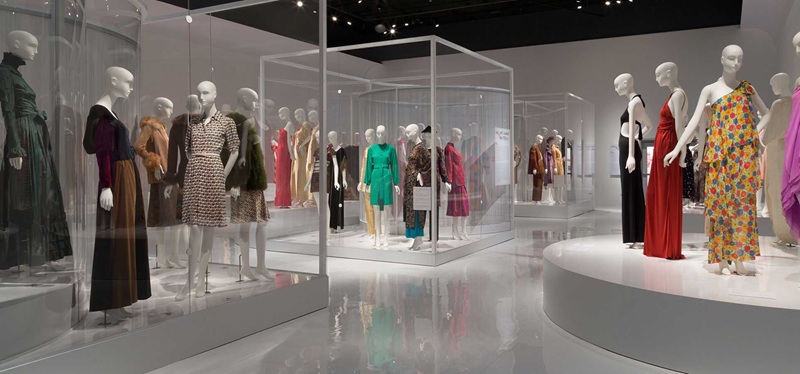
Located on the Upper East Side of Manhattan, The Frick Collection is one of New York City’s most cherished cultural institutions. Known for its intimate atmosphere and unparalleled collection of European art, the museum offers visitors a unique opportunity to experience world-class works of art in an historic mansion setting.
History and Founding
The Frick Collection was established by industrialist and philanthropist Henry Clay Frick, who made his fortune in the steel industry in the late 19th century. Frick’s wealth allowed him to amass an extraordinary collection of fine and decorative arts, which he began collecting in the 1880s. His goal was not only to create a museum for the public but also to showcase his exquisite taste in art and architecture.
In 1914, Frick commissioned the construction of a grand mansion on Fifth Avenue at 70th Street, designed by renowned architect Thomas Hastings. The building, known as the Frick Mansion, was completed in 1915 and remains the museum’s home today. Frick passed away in 1919, and shortly thereafter, he left the mansion and its collection to the public, with the stipulation that the works be maintained in the building he had so carefully selected and designed.
Architecture and Design
The Frick Collection is housed in a Beaux-Arts style mansion that is an architectural masterpiece in itself. The building’s grand exterior, with its classical columns and intricate detailing, contrasts beautifully with the serene interiors that evoke a sense of domestic elegance. The museum’s design emphasizes the feeling of visiting a private home, with rooms organized in a manner reminiscent of an upscale residence rather than a traditional museum space.
Upon entering, visitors are greeted with a luxurious entry hall and the tranquil atmosphere of the museum’s various galleries. The central courtyard, featuring a beautiful garden, adds to the experience, offering a peaceful respite from the bustle of the city outside.
The Art Collection
The Frick Collection’s holdings represent some of the finest examples of European painting, sculpture, and decorative arts from the Renaissance to the late 19th century. With works by such legendary artists as Rembrandt, Vermeer, Turner, and Goya, the collection provides a comprehensive view of Western art history.
Notable Works and Artists:
- Rembrandt van Rijn: The Frick is home to several masterpieces by the Dutch master, including Self-Portrait and Aristotle with a Bust of Homer, which are both considered among the most significant works in the museum.
- Johannes Vermeer: The collection includes Vermeer’s iconic The Glass of Wine, a rare opportunity to view a Vermeer outside of Europe.
- Fragonard’s The Progress of Love: These exuberant 18th-century French paintings are some of the standout pieces in the Frick’s collection.
- **Turner’s The Burning of the Houses of Lords and Commons: A vivid and emotional masterpiece that exemplifies Turner’s mastery of light and landscape.
- **Goya’s The Duchess of Alba: A portrait of Spanish aristocracy that embodies Goya’s skill in portraying character and elegance.
In addition to its world-renowned paintings, the collection also features important decorative art objects, such as French and English furniture, porcelain, and rare textiles. The museum’s collection of European bronzes and sculpture is also exceptional, including works by Jean-Baptiste Carpeaux, among others.
Special Exhibitions and Programming
While the Frick Collection is widely known for its permanent holdings, the museum also hosts rotating special exhibitions. These temporary exhibitions highlight a diverse range of themes and artists, often showcasing works from other international collections. The Frick’s exhibitions provide an opportunity to engage with new ideas and scholarship, allowing visitors to see the ways in which the museum’s historical collection connects to contemporary art practices.
In addition to its exhibitions, the museum offers a variety of public programs, including lectures, gallery talks, and concerts. The museum’s concert series, in particular, is renowned, as the intimate setting of the Frick mansion provides a remarkable acoustic experience for live music performances, ranging from classical to contemporary works.
Expansion and Transformation
In recent years, The Frick Collection has undergone a transformative renovation. In 2018, the museum temporarily closed its doors for construction work aimed at modernizing and expanding the museum facilities while preserving the historical integrity of the building. This project includes the construction of a new public entrance, new galleries, and improved visitor amenities. The museum’s beloved collection will remain the centerpiece of the museum’s mission, but the renovation promises to enhance the overall experience for guests.
Additionally, the Frick’s collection is being showcased in a new, temporary location at the Frick Madison, a former Madison Avenue location that houses the museum’s permanent collection while the mansion is closed for renovation. This new venue, located at 945 Madison Avenue, allows visitors to continue exploring the Frick’s treasures during the renovation period.
A Cultural Treasure
The Frick Collection remains one of the most beloved art institutions in New York, offering a rare glimpse into the world of European art through the eyes of a passionate collector. The museum’s combination of stunning artwork, historic architecture, and intimate atmosphere sets it apart from larger, more traditional art museums. For anyone interested in the great masters of European art, The Frick Collection provides an unparalleled and unforgettable experience. Whether you’re an art aficionado or a casual visitor, the Frick’s refined elegance and intellectual depth will leave a lasting impression.

